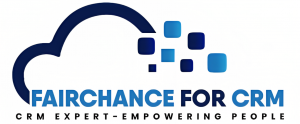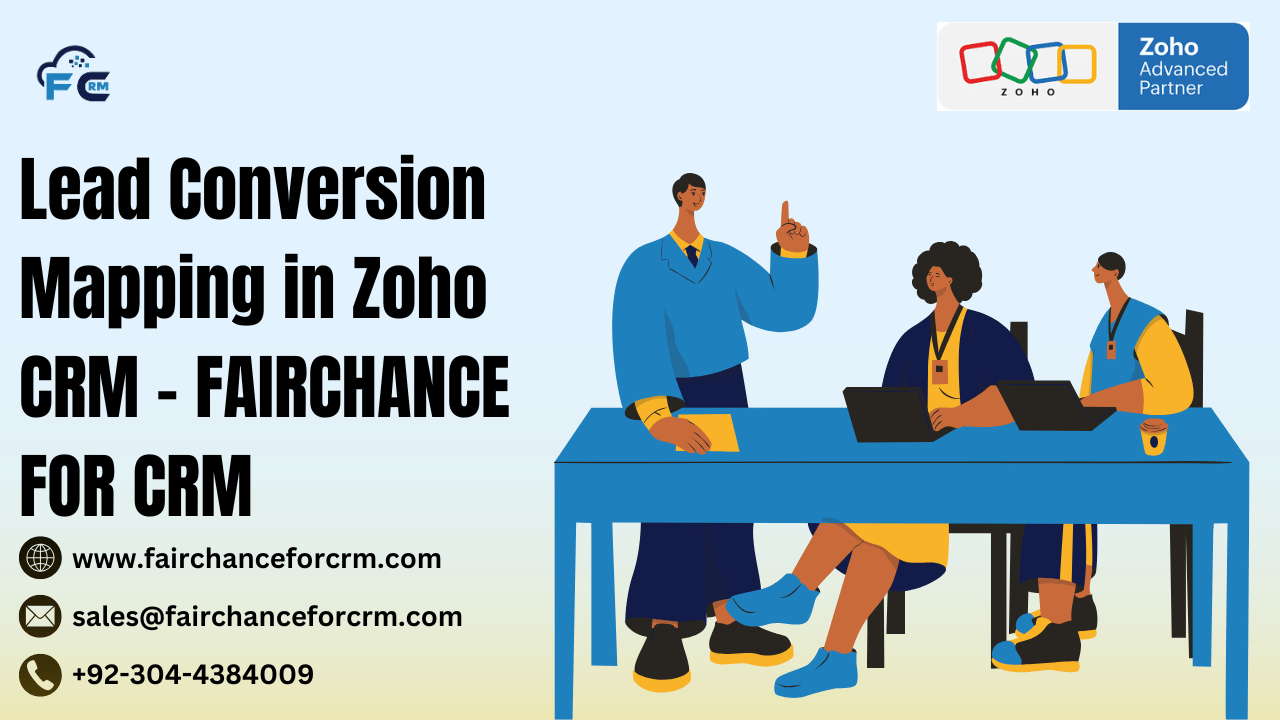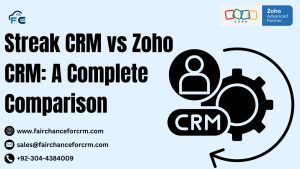Lead Conversion Mapping in Zoho CRM is today our topic. In the world of sales, lead conversion is a critical process for turning potential customers into actual clients. Zoho CRM offers powerful tools for automating and managing this process, ensuring that businesses can streamline their sales pipeline, improve conversion rates, and save time. One of the key features in Zoho CRM that enhances lead conversion is Lead Conversion Mapping.
Also Read:
- Best Email Marketing Tricks for Zoho Campaigns – FAIRCHANCE FOR CRM
- GST Reports in Odoo 18: A Comprehensive Guide
- How to Set Probationary Period in the Odoo HRMS
- Odoo ERP Support Solutions – FAIRCHANCE FOR CRM
- How to Find the Zoho ISO ID Number? FAIRCHANCE FOR CRM
What is Lead Conversion Mapping in Zoho CRM?
Lead Conversion Mapping is the process of mapping fields from the Lead module to the Account, Contact, and Deal modules when a lead is successfully converted. Zoho CRM allows businesses to define how the data captured during the lead generation phase should be transferred to other modules during the conversion process. This ensures that all important information is retained and made accessible to sales teams, without the need to manually enter the same details again.
Why Lead Conversion Mapping is Important
Lead conversion mapping is crucial because it:
- Streamlines the Sales Process: It eliminates redundant data entry by automatically transferring information from the lead to the contact, account, and deal records.
- Ensures Data Consistency: It helps maintain data consistency across modules, reducing the chances of discrepancies and errors.
- Increases Productivity: Sales reps spend less time on administrative tasks and more time focusing on customer engagement and closing deals.
- Improves Reporting and Analytics: By mapping leads correctly, businesses can track the full journey of a customer, from lead capture to conversion, which enhances reporting and performance analysis.
How Lead Conversion Mapping Works
In Zoho CRM, when a lead is converted, the system creates new records in the Account, Contact, and Deal modules (if they do not already exist) and maps the relevant lead data to these new records. Users can customize this mapping based on their business requirements, ensuring that the right fields from the Lead module are transferred to the corresponding fields in the other modules.
For example:
- Lead Name will map to Contact Name.
- Company Name will map to Account Name.
- Lead Source can be mapped to Deal Source.
This ensures that all the essential information captured during the lead phase is retained and accessible when the lead becomes a customer or an opportunity.
How to Set Up Lead Conversion Mapping in Zoho CRM
- Accessing the Settings: Go to Settings in Zoho CRM (click the gear icon at the top-right corner).
- Lead Conversion Settings: Under Customization, select Modules and then choose Leads.
- Lead Conversion Mapping: In the Leads module, click on the Lead Conversion option, which will allow you to map fields between the Lead, Contact, Account, and Deal modules.
- Customizing the Mapping: You can customize which fields you want to map. For example, you can choose to map custom fields or standard fields like Email, Phone Number, or Lead Status to their respective fields in the Contact and Deal modules.
- Save and Implement: After setting up the mapping, save your changes. Going forward, whenever a lead is converted, Zoho CRM will automatically populate the corresponding fields in the other modules based on the mapping.
Example of Lead Conversion Using Deluge Script
Deluge (Data Enriched Language for the Universal Grid Environment) is Zoho’s scripting language that helps automate tasks and integrate various features in Zoho CRM. In the context of lead conversion, Deluge can be used to customize the process further by adding additional logic or automating specific actions post-conversion.
Here is an example of a Deluge script that triggers an action when a lead is converted and updates the related Deal record with the Lead Source:
Explanation:
- leadId: This is the ID of the lead being converted.
- leadRecord: Retrieves the lead record using the lead ID.
- leadSource: Extracts the Lead Source field from the lead.
- dealId: Fetches the ID of the associated deal.
- updateMap: Maps the Lead Source field to the Deal record.
- updateResponse: Updates the Deal record with the new information.
In this example, the Lead Source from the Lead module is automatically transferred to the Deal record upon conversion, ensuring that sales teams can easily track where the lead originated.
FAQs About Lead Conversion Mapping in Zoho CRM
1. Can I customize the field mapping during lead conversion?
Yes, Zoho CRM allows you to customize the field mapping during lead conversion. You can map standard fields, as well as custom fields, to ensure that relevant data is transferred to the Contact, Account, and Deal modules.
2. What happens if a field is left unmapped during lead conversion?
If a field is not mapped, the data in that field will not be transferred to the Contact, Account, or Deal modules during conversion. Making sure that critical fields are mapped is crucial because failing to do so could leave information missing from your records.
3. Can I map custom fields to standard fields in Zoho CRM?
Yes, you can map custom fields to both standard and custom fields across modules. You can modify the conversion procedure to suit your company’s requirements thanks to this flexibility.
4. How can I automate lead conversion with Deluge?
Automating lead conversion based on specified criteria, like automatically converting leads after they reach a particular stage or updating related records when conversion occurs, is possible with Deluge scripts.
5. What happens if a lead already has a Contact or Account associated with it?
If a lead is converted and an Account or Contact already exists, Zoho CRM will link the lead to the existing records rather than creating new ones. This prevents duplication and ensures that your CRM remains organized.
6. Can I track the performance of lead conversions in Zoho CRM?
Indeed, Zoho CRM lets you make dashboards and reports that monitor lead conversion rates, which is useful for assessing sales effectiveness and pinpointing areas in need of development.
Conclusion
For companies trying to increase productivity and streamline their sales process, Lead Conversion Mapping in Zoho CRM is a crucial tool. By mapping fields between the Lead, Contact, Account, and Deal modules, Zoho CRM ensures that data flows smoothly throughout the sales cycle. Businesses can increase conversion rates and get the most out of their CRM with customization choices, Deluge automation, and improved reporting. Zoho CRM provides the adaptability and versatility required to boost sales and enhance overall business performance, whether you’re using scripts to automate the lead conversion process or improving field mapping for consistency.
For more information about the Lead Conversion Mapping in Zoho CRM, visit this link.
If you want to Free Trail Zoho, click on this link.




